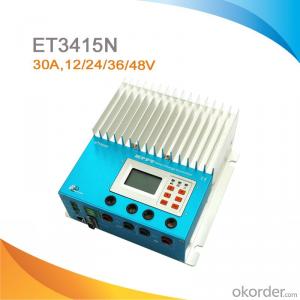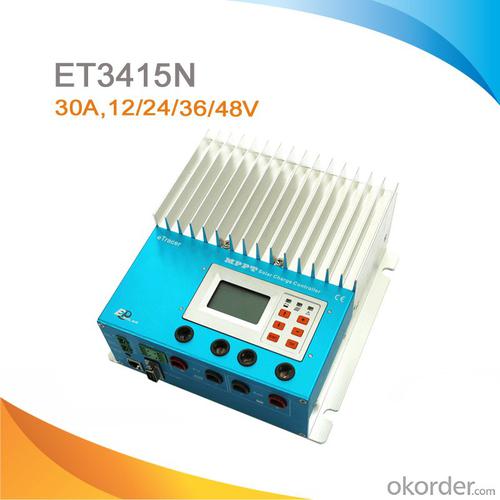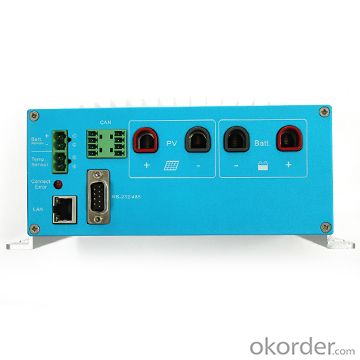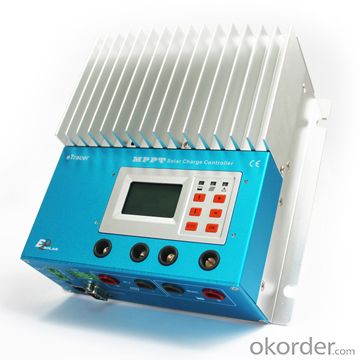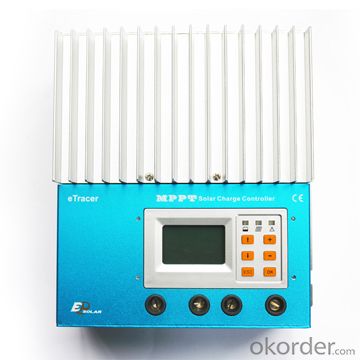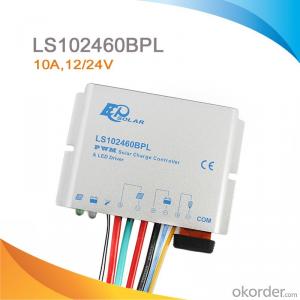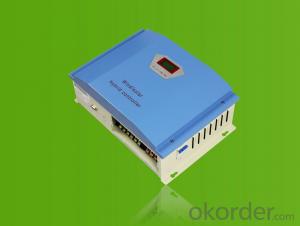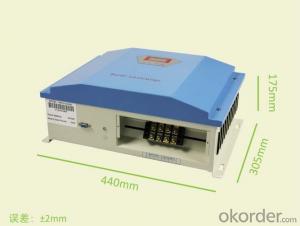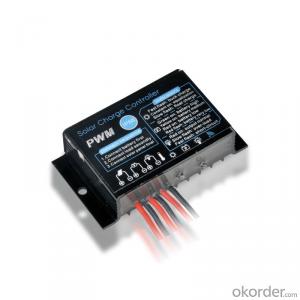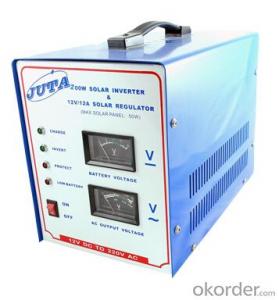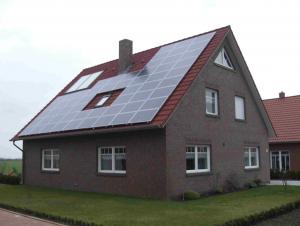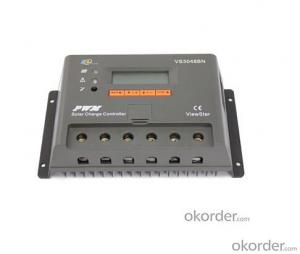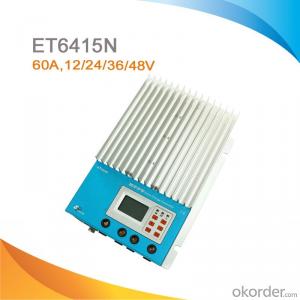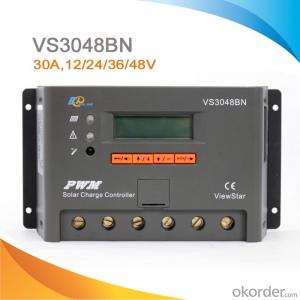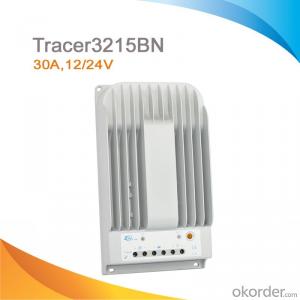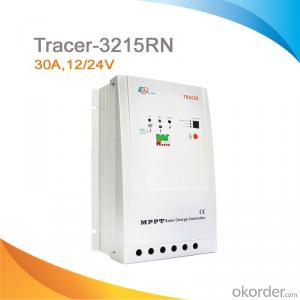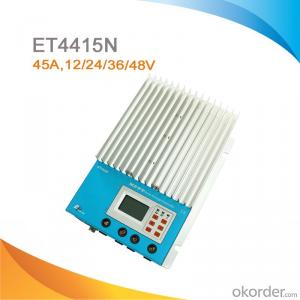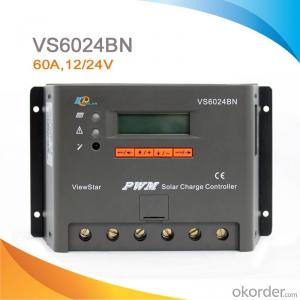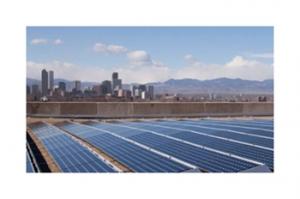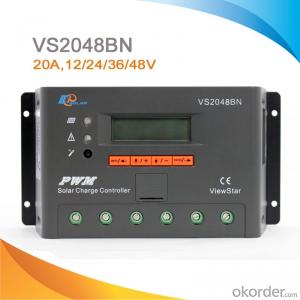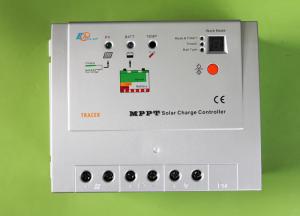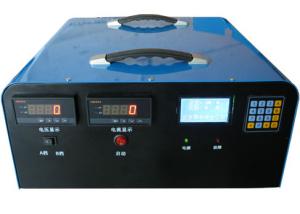MPPT Solar Panel Charge Controller 30A,12/24/36/48V,ET3415N
OKorder Service Pledge
OKorder Financial Service
You Might Also Like
Specifications
MPPT charge controller
Maximum power point tracker
temperature compensation
LCD display
Communicate with PC
Features:
·12/24/36/48V auto work
·Advanced MPPT technology
·Several seconds tracking speed
·High Tracking efficiency of 99%
·Multiphase synchronous rectification technology
·Peak conversion efficiency of 98%
·DSP&ARM processors architecture ensures high speed and performance
·Gel, Sealed, Flooded battery option
·Max. 450 days data logging by connection to PC
·Multifunction LCD displays system data and status
·Three kinds of communication ports :RS232, CAN BUS and Ethernet
·Three stages charging optimizes battery performance
·Software update by users
Electronic Protections:
·PV short circuit protection
·PV reverse polarity protection
·PV overvoltage alarm protection
·PV over current protection
·Battery overcharge protection
·Battery over discharge protection
·Battery reverse polarity protection
·Overheating protection
Specification:
Model | ET3415N | ET4415N | ET6415N |
Rated system voltage | 12V/24V /36V/48V auto work | ||
Rated battery current | 30A | 45A | 60A |
Max. PV open circuit voltage | 150V | ||
Voltage range | 8~72V | ||
Max.PV input power | 400W (12V) | 600W (12V) | 800W (12V) |
800W (24V) | 1200W (24V) | 1600W (24V) | |
1200W (36V) | 1800W (36V) | 2400W (36V) | |
1600W (48V) | 2400W (48V) | 3200W (48V) | |
Self-consumption | 1.4~2.2W | ||
Grounding | Negative | ||
Dimension | 231x203x105mm | 285x203x105mm | 285x203x121mm |
Terminal | 35mm2 | 35mm2 | 35mm2 |
Net Weight | 4.1kg | 4.4kg | 5.0kg |
Working temperature | -25℃~+55℃ | ||
Storage temperature range | -30℃~+85℃ | ||
Humidity | 10%-90% NC | ||
Enclosure | IP20 | ||
Altitude | ≤3000m | ||


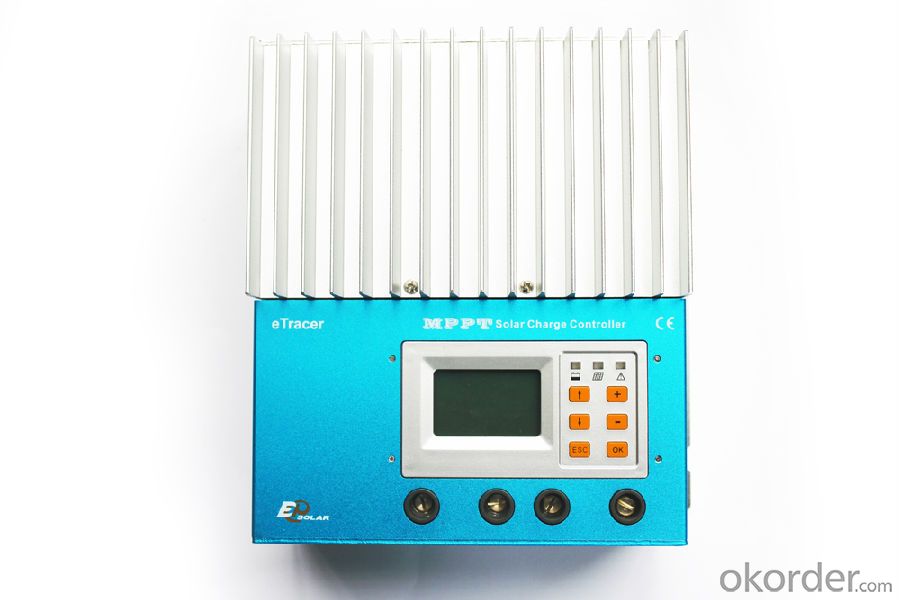
FAQ:
Q1. What is the voltage?
A1. Our 45/60A solar charge controller is 12/24/36/48V auto work.
Q2. What is the difference between MPPT&PWM?
A2. MPPT has higher efficiency, it can track the max power point and won't waste energy.
Q3. What is the efficiency of the MPPT controller?
A3. MPPT>99%, peak conversion efficiency>98%.
Q4. What is the waranty of product?
A4. 12 months.
Q5. What protection does your MPPT controller have?
A5. PV array short circuit, PV reverse polarity, Battery reverse polarity, Over charging, Output short circuit.
- Q: Can a solar controller be used in a standalone solar power system?
- Yes, a solar controller can be used in a standalone solar power system. A solar controller regulates the voltage and current from the solar panels to the batteries, ensuring optimal charging and preventing overcharging. In a standalone solar power system, where there is no connection to the grid, a solar controller is essential to manage the flow of energy and protect the batteries.
- Q: Can a solar controller be used with solar panels that are connected to a solar telecommunications system?
- Yes, a solar controller can be used with solar panels that are connected to a solar telecommunications system. A solar controller regulates the flow of energy from the solar panels to the system, ensuring optimal performance and preventing overcharging or damage to the batteries.
- Q: Can a solar controller be used with solar panels that are connected to a solar lighting system?
- Using a solar controller with solar panels connected to a solar lighting system is possible. A solar controller, also referred to as a charge controller, is a vital component of a solar power system. It regulates the flow of electrical energy between the solar panels, battery storage, and other devices. Its purpose is to prevent the batteries from being overcharged or over-discharged, which can result in damage and a shorter lifespan. In the context of a solar lighting system, the solar controller plays a crucial role in managing the charging and discharging cycles of the batteries. These batteries store the energy generated by the solar panels during the day. The solar controller ensures that the batteries are optimally charged from the solar panels and that the stored energy is efficiently utilized for lighting purposes during nighttime. By utilizing a solar controller, the efficiency and lifespan of the solar lighting system can be maximized. It achieves this by safeguarding the batteries against excessive voltage and current fluctuations. Some solar controllers also offer additional features, such as load control. This feature allows users to manage the power consumption of the lighting system, ultimately extending the battery life. Therefore, it is highly recommended to incorporate a solar controller into a solar lighting system that is connected to solar panels. This ensures proper and efficient operation of the system.
- Q: What is the maximum input current for a solar controller with an LCD display?
- The maximum input current for a solar controller with an LCD display would depend on the specific model and its design specifications. It is recommended to consult the product manual or contact the manufacturer for accurate information regarding the maximum input current for a particular solar controller.
- Q: What is the maximum voltage rating of a solar controller?
- The maximum voltage rating of a solar controller can vary depending on the specific model and manufacturer, but it is typically around 150 volts.
- Q: How does a solar controller handle the protection against reverse polarity?
- A solar controller handles the protection against reverse polarity by employing diodes or other electronic components that prevent the flow of current in the wrong direction. This ensures that the solar panel is connected correctly to the battery, preventing any potential damage or malfunction caused by reverse polarity.
- Q: Can a solar controller be used with different types of charge controllers?
- No, a solar controller cannot be used with different types of charge controllers. Each type of charge controller, such as PWM (Pulse Width Modulation) or MPPT (Maximum Power Point Tracking), has its own specific design, functionality, and compatibility requirements. A solar controller, also known as a solar charge controller, is specifically designed to work with a particular type of charge controller and is not interchangeable between different types. Therefore, it is crucial to ensure compatibility between the solar controller and the charge controller being used in order to achieve optimal performance and efficient charging of solar batteries.
- Q: How does a solar controller handle battery reverse polarity protection?
- A solar controller handles battery reverse polarity protection by incorporating built-in circuitry that prevents the flow of current to the battery in case it is connected with the wrong polarity. This protection mechanism ensures the safety of the battery and the solar controller by preventing potential damage caused by reverse polarity.
- Q: What are the indicators and display features typically found on a solar controller?
- Solar controllers, also known as charge controllers, are essential components in solar power systems that ensure efficient charging and protection of batteries from overcharging or discharging. These controllers are equipped with various indicators and display features that provide crucial information about the system's performance. One common indicator found on solar controllers is the battery status indicator. This indicator shows the current state of charge of the battery, usually represented by a series of LED lights or a voltage reading. It allows users to quickly assess the battery's capacity and determine if it requires charging or if it is fully charged. Another important indicator is the solar input indicator, which displays the amount of solar power being generated by the photovoltaic (PV) panels. This indicator can be presented in Watts or Amps, giving users a real-time understanding of the system's energy production. By monitoring this indicator, users can assess the system's efficiency and identify any potential issues, such as shading or malfunctioning panels. Some solar controllers also feature load or output indicators, which show the amount of power being drawn from the battery to power connected loads. This indicator is particularly useful in off-grid systems, allowing users to manage their energy consumption and prevent overloading the battery. Additionally, many solar controllers are equipped with a digital or analog display that provides detailed information about the system's performance. This display often includes parameters such as battery voltage, charging current, load current, and ambient temperature. These readings enable users to have a comprehensive overview of the system's operation and make informed decisions regarding energy usage and maintenance. Furthermore, advanced solar controllers may include additional display features such as data logging capabilities or communication interfaces. Data logging allows users to analyze historical data and track trends in energy production and consumption, aiding in system optimization. Communication interfaces, such as USB or RS485 ports, enable the controller to connect to external devices or monitoring systems for remote monitoring and control. In summary, the indicators and display features typically found on a solar controller include battery status indicators, solar input indicators, load or output indicators, as well as digital or analog displays showing various system parameters. These features provide users with essential information to monitor and manage their solar power systems effectively.
- Q: Can a solar controller be used with solar-powered street lights?
- Yes, a solar controller can be used with solar-powered street lights. The solar controller helps regulate and manage the charging and discharging of the batteries in the street lights, ensuring optimal performance and efficient utilization of solar power.
Send your message to us
MPPT Solar Panel Charge Controller 30A,12/24/36/48V,ET3415N
OKorder Service Pledge
OKorder Financial Service
Similar products
Hot products
Hot Searches
Related keywords
